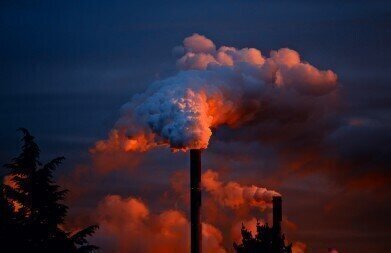Gas Chromatography
How Can Gas Chromatography Help with Pollution?
Apr 27 2022
Pollution is a threat to both human health and the wellbeing of the planet. Gas chromatography is one of the many techniques used to monitor and prevent pollution. Read on as we take a closer look…
Monitoring pollutants in the air
Gas chromatography is commonly used to monitor pollutants in the air we breathe. The separation technique is crucial to understanding what is in the air and in what quantity. Gas chromatography can also tell us where pollutants are more common, revealing potential sources of contaminants and toxins.
Researchers also use gas chromatography to monitor how pollution changes, whether that’s over long periods or even day to day. For example, there are often peak periods where pollutants appear in higher quantities in the air across one day.
Pollutants in the air cause breathing difficulties, congenital disabilities, and even cancer. Gas chromatography can help scientists and manufacturers keep an eye on the levels of the specific substances that cause these issues and help lower the risk to consumers.
Preventing pollution
Monitoring pollution is one thing, but preventing pollution is vital to make a more significant difference in air quality and emissions. Scientists use gas chromatography to analyse and quantify specific chemicals released into the air, so manufacturers can minimise or even remove them from their products.
For example, gas chromatography helps monitor and regulate the amount of volatile organic compounds (VOCs) in the air. VOCs are emitted from everything from carpets and interior furnishings to paints and cleaning products. The manufacturers of these products have to ensure their products meet national safety guidelines and abide by air pollution laws.
Along with improving their products, manufacturers have a legal responsibility to label their products with sufficient warnings about ventilation based on the content of their product. Gas chromatography provides manufacturers with the chemical data they need to advise their consumers.
Cans of paint often carry a warning about needing to use the product in a well-ventilated room, for instance. This is because the VOCs the paint emits need ventilating out of the room quickly, so you aren’t breathing them in. Nevertheless, the VOCs that escape from your open window are being released into the air, so the manufacturer must still work to ensure environmentally friendly levels of harmful substances.
Testing fuels
It’s not just the air that contains pollutants – the fuels we use contain toxins too. Gas chromatography is used extensively in the fuel industry to test levels of harmful substances. Fuel manufacturers have a responsibility to maintain safety standards and lower their impact on the environment. Gas chromatography is used across the fuel industry to reduce pollution and health risks to consumers and workers
Digital Edition
Chromatography Today - Buyers' Guide 2022
October 2023
In This Edition Modern & Practical Applications - Accelerating ADC Development with Mass Spectrometry - Implementing High-Resolution Ion Mobility into Peptide Mapping Workflows Chromatogr...
View all digital editions
Events
ACS National Meeting - Fall 2024
Aug 18 2024 Denver, CO, USA
Sep 04 2024 Chiba, Tokyo, Japan
Sep 04 2024 University of Warwick, Coventry, UK
Sep 10 2024 Rockville, MD, USA
Plastics Recycling World Expo Europe
Sep 11 2024 Brussels, Belgium













